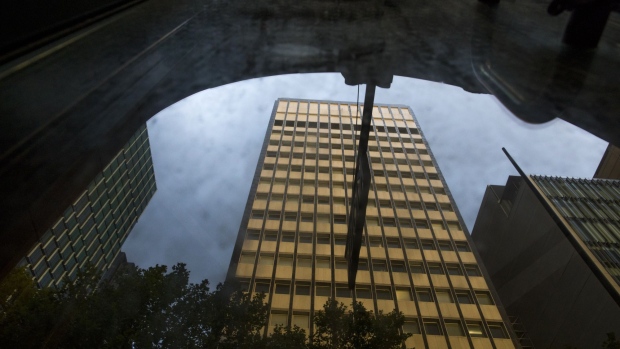Feb 6, 2023
Australia Raises Key Rate to 10-Year High, Signals Hawkish Bias
, Bloomberg News

(Bloomberg) -- Australia’s central bank raised interest rates by a quarter-percentage point and said further tightening will be needed to crush stubbornly-high inflation, sending the currency and bond yields higher.
At its first meeting of the year, the Reserve Bank lifted the cash rate to 3.35%, the highest level since September 2012, in a widely-anticipated decision. In his statement outlining expectations of further hikes, Governor Philip Lowe dropped last year’s qualifier that the bank wasn’t on a pre-set path on rates.
“The RBA just seems to be removing the conditionality from forward guidance about more hikes,” said Tim Baker, head of macro research at Deutsche Bank AG. “So probably a case of dispensing with the pause narrative.”
That hawkish interpretation sent the currency to an intra-day high of 69.51 US cents before it pared gains, while three-year bond yields jumped 18 basis points to 3.28% and stocks fell 0.5%.
Lowe, in past communications, has talked about drawing out the tightening cycle in order to keep the RBA’s battle to contain inflation front and center for households. Today’s statement suggests that’s a potential path given he doesn’t expect inflation to return to the top of the 2-3% target until mid-2025.
Australia has lagged international counterparts in its policy response to higher prices, having raised rates by 3.25 percentage points, compared with 4 in New Zealand and 4.5 in the US. The RBA’s slower pace reflects Lowe’s efforts to bring the economy in for a soft landing.
Lowe’s statement today is a sharp contrast from December when the board discussed a possible pause in tightening and traders responded by repricing the rate outlook.
“The statement definitely has a hawkish tinge to it,” said Su-Lin Ong, chief economist at RBC Capital Markets. “The emphasis on returning inflation to target is very clear. And that takes front and center of the statement over any kind of concerns in terms of a moderation in activity.”
Money markets imply a peak rate of 3.9% by mid-2023, higher than economists’ forecast of 3.6%, as inflation remains well above the RBA’s target and isn’t expect to return to it for more than two years.
“The new timeline for inflation to return to the target zone is certainly something the market was unprepared for. In other words, the chance for the first rate cut will be very unlikely to be on the cards for the 2023 calendar now,” said Hebe Chen, an analyst at IG Markets.
Economists at AMP Capital Markets, Bloomberg Economics and Commonwealth Bank of Australia are among those predicting rate cuts later this year.
CBA amended its forecast after today’s decision to predict quarter-point hikes in March and April to take the cash rate to 3.85%. It then expects the RBA to reverse course in the fourth quarter and lower borrowing costs.
What Bloomberg Economics Says...
“We don’t think the RBA will be able to follow through on guidance that more hikes will be needed. We see slowing demand, a weakening labor market and peaking inflation driving the RBA to go on hold”
— James McIntyre, economist.
To read the full report click here
Lowe acknowledged that monetary policy operates with a lag and that there is still uncertainty about the timing and extent of an expected slowdown in household spending.
Working in his favor is a housing market where the pace of decline has begun to ease, raising the prospect of an orderly correction. Employment growth has also cooled in recent months while consumer spending is showing early signs of slowing.
Yet inflation remains uncomfortably high, with core prices in the fourth quarter surging 6.9% — exceeding the RBA’s forecast of 6.5% — and stronger than the impulse seen in the US and UK.
That helps explains why economists at Deutsche and Goldman Sachs Group Inc. expect the cash rate to surpass 4% this year.
“The RBA Board has essentially made up their mind and intend to raise the cash rate further over coming months,” said Gareth Aird, head of Australia economics at CBA. “The RBA’s concerns over inflation becoming entrenched have ratcheted up a notch.”
--With assistance from Matthew Burgess, Georgina Mckay and Zoe Schneeweiss.
(Adds comments from economists, updates markets.)
©2023 Bloomberg L.P.





